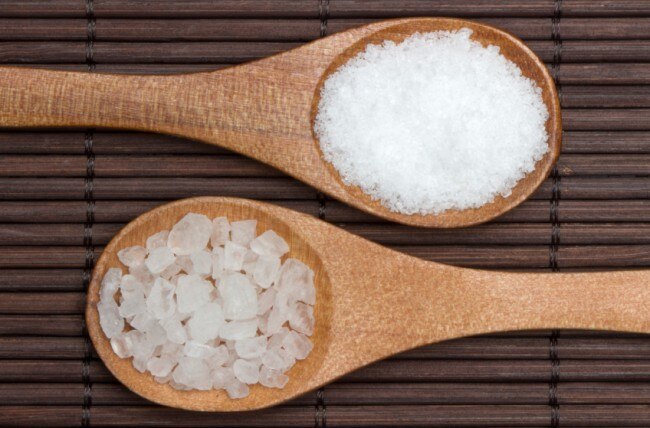We hear often about how salt is bad for us, but what about natural sources? Do the purported benefits outweigh the risks of consumption, and how do we make a decision about which type of salt to use? Let’s separate the facts from the fiction.
Salt, or sodium chloride, is essential for vital physiologic functions such as muscle contraction (including heart function), nerve action and cellular fluid balance. When sodium intake drops extremely low, our bodies actually compensate by drastically reducing sodium excretion—it’s that important!
However, most research indicates that there is a dose-response relationship with dietary sodium intake and blood pressure: as intake increases past the point necessary for homeostasis (about 1,200 mg/day), blood pressure increases in tandem. Further studies have clarified that this seems to be more likely in certain populations, such as those over 50 years of age, African Americans and those with renal disease (which may or may not be related to diabetes). Not everyone is “sodium-sensitive,” but currently there is no validated clinical test to determine this.
Interestingly, high potassium intake, which is accomplished primarily through fruit and vegetable consumption, tends to mediate this sodium-related increase in blood pressure. Calcium intake, from vegetables as well as dairy products, further helps to mediate sodium-related hypertension.
Is sea salt better for you?
So, is refined table salt single-handedly responsible for the negative effects of excessive sodium? Is sea salt a better alternative? By weight, both table salt and sea salt contain about the same amount of sodium chloride. However, since sea salt crystals are larger and coarser, there may be a difference in sodium by volume. For example, a teaspoon of table salt will contain more crystals (and therefore more sodium) than a teaspoon of sea salt. It’s easy to visualize this difference when thinking about the air spaces between granules of sea salt.
Sea salt also contains some natural minerals that are more thoroughly filtered from table salt during processing, but they are present only in trace amounts (<5% of the daily value). These same minerals can easily be obtained in larger quantities through the consumption of other healthful foods, and their presence does not outweigh the potential for hypertension to result from excessive sodium intake.
Should you swear off table salt?
Some people worry about the level of processing associated with table salt. While table salt may contain one or two additives, it’s hardly chemical-laden. To produce table salt, raw natural salt is mixed with water and sodium hydroxide to precipitate unwanted impurities. The remaining brine is the vacuum-dried, with the final result being nearly 100% pure sodium chloride.
Kosher salt is produced by condensing smaller evaporated particles into larger ones. It’s important to note that sea salt may also undergo rinsing with brine to remove impurities and some minerals, and both table salt and sea salt originate with…salt from the sea! The total allowed additives in table salt are limited to less than 2% of the total weight, and in reality, most table salt contains additives far below this threshold. Generally, labels will indicate that the product is 99% pure sodium chloride, with the remaining 1% or less being comprised of anti-caking agents and fortified iodine. Both of these will be listed clearly on the packaging, per FDA requirements, and are very inert substances which are unlikely to affect taste.
How much salt is OK to consume?
At the end of the day, both types of salt can lead to health problems if over-consumed. Moderate sodium intake is 2,400 mg or less per day, which still allows for the prudent use of salt in cooking. Dietary data shows us that salt added to foods at home is not our primary source of sodium; rather, it’s the salt added to foods during processing or at the restaurant level.
The choice to use either table salt or sea salt should be based on whether iodine fortification is needed or wanted, as well as culinary elements such as taste, texture and even color. Sea salts are generally available in a wide variety of flavors, which can enliven dishes, and depending on the use, the larger particles may provide an aesthetic appeal.

